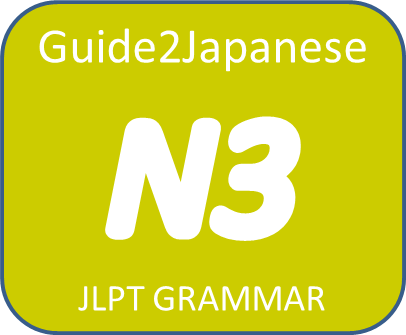JLPT N3 GRAMMAR: ~てる・~でる
| ~てる・~でる | |
| 意味 | |
| 接続 | 動テ形+いる・でる |
In informal conversations てる &でる are used instead of ている &でいる respectively.
Formation:
動テ形+いる・でる
Example sentences:
- 「あそこに座ってる人、だれ?」
- `Asoko ni suwatteru hito, dare?’
- “Who is sitting over there?”
- “वहाँ बैठा आदमी कौन है?”
- 「すぐ行くから、先に行ってて」
- `Sugu ikukara,-saki ni ittete’
- “I will go soon, so going early.”
- “मुझे जल्दी जाना है, इसलिए पहले जा रहा हु।”
- 「どうしたの。泣いてちゃ(泣いていては)わからないよ。理由を言ってくれなくちゃ」
- `Dō shita no. Nai techa wakaranai yo. Riyū o itte kurenakucha’
- “What’s wrong? I don’t understand why are you crying. you have to tell why.”
- “क्या हुआ है? मुझे समझ नहीं आ रहा है कि तुम क्यों रो रहे हो। तुम्हें बताना होगा क्यों।”


